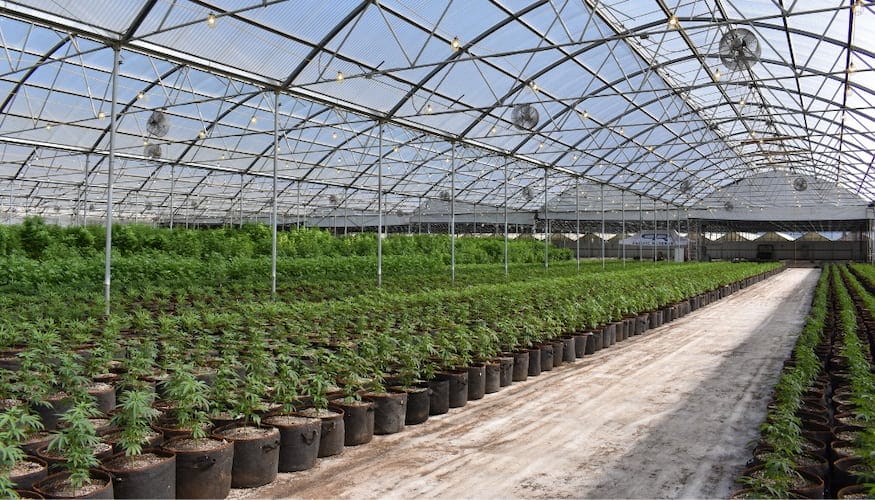Cannabis Vegetative Growth Stage: Tips & Tricks

Welcome to the verdant world of the cannabis vegetative growth stage! Cultivators know that this phase is the bedrock of a successful harvest. Through dedicated cannabis plant care, growers can significantly influence the size and quality of their final yields. Whether you’re a seasoned gardener or a green-thumbed rookie, these foundational tips are designed to ensure optimal cannabis vegetative growth. From selecting robust strains to utilizing specific nutrients, understanding how to foster an environment that promotes vegetative growth is key. Join us as we delve deep into the essential practices that lay the groundwork for thriving cannabis plants.
Establishing a strong vegetative phase is pivotal to the health and potency of your plants. The proper attention to detail now will bring about lush, vigorous plants that are well-prepared for flowering. These insights will empower you to refine your approach, ensuring that you’re not just growing cannabis, but cultivating excellence.
Key Takeaways
- Mastering light exposure and strain selection is crucial for promoting vegetative growth in cannabis
- Training techniques, such as topping and pruning, can enhance a plant’s structure for improved light absorption
- Optimizing environmental controls like humidity and temperature is essential during the vegetative phase
- Customizable nutrients and supplements can support vigorous vegetative development
- Preventing common issues early on sets the stage for a flourishing flowering period and bountiful harvest
Understanding the Cannabis Vegetative Stage
The journey from seed to sensimilla is marked by several cannabis growth stages, with the vegetative stage serving as a critical period of development. During this stage, the plant leaves the fragility of its seedling phase behind and gears up for the eventual flowering stage. Understanding the intricacies of this phase, including the cannabis vegetative stage duration and the transformation process, can yield significant benefits for cultivators.
What Is the Vegetative Stage?
As the name suggests, the vegetative stage refers to a period of growth when the cannabis plant focuses on building a strong vegetative, or leafy, structure. This stage sets the stage for healthy flowering, with the plant developing dense foliage and a robust root system that’s critical for nutrient uptake and overall stability.
Duration of the Cannabis Vegetative Stage
The span of the vegetative stage can vary greatly, typically lasting between 3 to 16 weeks. This variation in cannabis vegetative stage duration is influenced by genetic factors, environmental conditions, and grower preferences. While some strains quickly shift to the flowering stage, others require a prolonged vegetative period to reach their full potential.
Transition From Seedlings to Vegetative Growth
The transition from seedlings to the vegetative state marks a pivotal shift in a cannabis plant’s life. Once a sufficient root system is established post-germination, the plant enters the vegetative stage, characterized by the rapid expansion of both roots and foliage. It’s during this stage that cannabis plants lay down the building blocks that will support future buds and thrive through substantial photosynthesis.
Whether you’re growing for personal use or commercial purposes, comprehending the vegetative stage’s nuances is paramount. It’s a delicate dance of anticipating the plant’s needs and providing the right conditions for vigorous growth—setting the best possible stage for successful cultivation.
Optimal Cannabis Vegetative Growth Conditions
To cultivate cannabis plants that flourish, it’s imperative to maintain a balance of essential elements during the cannabis vegetative stage. Key among these are cannabis vegetative stage lighting and cannabis vegetative stage nutrients, both of which contribute significantly to the health and vitality of your plants. Ideal conditions lead to stronger, bushier, and more resilient cannabis, laying the groundwork for an abundant flowering stage.
One of the cornerstones of vegetative growth is full-spectrum lighting, which replicates the sun’s natural rays and provides a broad range of wavelengths necessary for healthy plant development. Modern growers have an array of lighting options at their disposal, but knowing how to use these effectively is what sets successful cultivations apart.
Understanding the nutritional needs during this time is just as crucial. A tailored mix of nitrogen, phosphorus, and potassium, alongside a suite of micronutrients, ensures your plants have everything they need to build strong cellular structure and prepare for the demanding flowering phase. This is where knowledge and precision in dosage and timing can make all the difference.
Bearing the vitality of proper nourishment in mind, below is a detailed outline of the recommended nutrient balance for cannabis during the vegetative stage:
| Nutrient | Role in Vegetative Growth | Recommended Concentration |
|---|---|---|
| Nitrogen (N) | Essential for leaf and stem development | High |
| Phosphorus (P) | Supports root growth and energy transfer | Medium |
| Potassium (K) | Crucial for overall plant health and metabolism | Medium |
| Micronutrients (e.g., Calcium, Magnesium) | Important for various plant functions and enzyme activation | Low to Medium |
With the right tools and knowledge, even a novice grower can create an environment in which their cannabis plants will thrive. Remember to monitor your plants closely throughout the vegetative stage, and adjust light and nutrients as needed to foster vigorous, healthy growth.
Maximizing Yield with Strain Selection
Understanding the importance of seed genetics is fundamental when aspiring to cultivate high-yielding strains of cannabis. Selecting the right variety designed for either indoor or outdoor cultivation can greatly influence the duration and efficiency of cannabis vegetative growth, subsequently maximizing the overall potential yield. Strains like White Widow, Northern Lights, and Jack Herer have gained the approval of experienced cultivators for their vigorous vegetative growth and fruitful yields.
High-Yielding Indoor & Outdoor Strains
While indoor growers may prioritize strains that flourish within controlled environments, outdoor cultivators often seek varieties that are resilient and adaptable to natural conditions. Here are some top contenders recognized for their abundant harvests across different growing settings:
- White Widow: Ideal for indoor setup due to its moderate height and substantial resin production.
- Northern Lights: Known for its fast flowering time and ease of growth, both indoors and outdoors.
- Jack Herer: Offers growers flexibility with impressive yields in both environments, thanks to its genetic stability.
White Widow, Northern Lights, and Jack Herer Specifics
These iconic strains not only serve as benchmarks for quality but offer unique characteristics that can influence the approach to vegetative management:
| Strain | Indoor Yield | Outdoor Yield | Flowering Time |
|---|---|---|---|
| White Widow | Up to 18 oz per square meter | 21 oz per plant | 8-9 weeks |
| Northern Lights | Up to 18 oz per square meter | 22 oz per plant | 7-8 weeks |
| Jack Herer | Up to 18 oz per square meter | 18 oz per plant | 10-12 weeks |
Genetics’ Impact on Vegetative Development
The genetic makeup of a cannabis strain determines not only its cannabinoid content but also its growth patterns, resistance to disease, and yield. When optimizing for vegetative growth, growers must consider factors such as spacing to accommodate branching and height, lighting, and water requirements. Harnessing the inherent qualities of high-yielding strains ultimately leads to a more efficient and possibly more lucrative grow cycle.
Note: While genetics play a significant role, a successful vegetative phase also relies on sound cannabis vegetative growth tips, consistent care, and growing expertise.
Lighting Essentials for Cannabis Vegetative Growth
The pivotal role of proper cannabis vegetative stage lighting cannot be overstated when looking to maximize the health and vigor of growing cannabis plants. By harnessing the optimal lighting conditions, cultivators can significantly promote vegetative growth in cannabis. Whether utilizing natural sunlight in an outdoor setting or leveraging sophisticated indoor lighting systems, understanding the effects of light wavelength, intensity, and photoperiod is essential for vigorous plant development.
For indoor cultivation, selecting the right type of lights is crucial, as they simulate the sun’s natural rays which are essential for chlorophyll production and overall growth. Here is a comparative analysis of popular lighting types:
| Lighting Type | Benefits | Considerations |
|---|---|---|
| LEDs (Light-Emitting Diodes) | Energy-efficient, low heat emission | Higher initial cost but long-term savings |
| HID (High-Intensity Discharge) | High light output, proven results | Generates heat; may need additional cooling |
| CFLs (Compact Fluorescent Lights) | Good for small setups or supplementary lighting | Less efficient for larger operations |
| T5 Fluorescent Tubes | Even light distribution, low heat emission | Less intense light; more suitable for seedlings or clones |
It is recommended to provide at least 14 hours of light to sustain the vegetative state, while an aggressive 24-hour light schedule can spur even faster growth rates, albeit with increased energy consumption. This marathon of ongoing light exposure serves to promote vegetative growth in cannabis by preventing the plants from entering the flowering phase too soon.
- Determine the type of lighting best suited for your setup and growth goals.
- Consider the energy efficiency, initial costs, and long-term savings.
- Balance a lighting schedule that fosters rapid growth while being mindful of energy usage.
Ultimately, tailored lighting strategies in the vegetative stage lay the groundwork for flourishing plants that are primed to produce abundant yields during the flowering period.
The Role of Proper Nutrition During the Veg Stage
Navigating the vegetative stage of cannabis cultivation requires an intricate balance of knowledge and precision. At this pivotal stage, strong and healthy growth is paramount for preparing the plant for fruitful flowering periods. It thus becomes crucial to focus on feeding the plants with the right cannabis vegetative stage nutrients to ensure optimal cannabis vegetative growth.
Importance of Nitrogen, Phosphorus, and Potassium
Achieving robust vegetative growth in cannabis is largely dependent on three primary nutrients: nitrogen, phosphorus, and potassium. Each plays a fundamental role in plant health and development. Nitrogen is essential for the growth of leaves and stems, phosphorus is vital for root development and flower formation, and potassium aids in overall plant wellness and disease resistance.
Recommended Nutrient Brands and Products
With various nutrient brands on the market, growers must select products tailored to the vegetative stage of cannabis. Renowned for their quality and efficiency, brands like Advanced Nutrients offer solutions designed specifically for cannabis plants, ensuring they receive the correct amount of each essential nutrient during the vegetative stage.
Customizing Nutrients for Your Grow with BudLabs App
Understanding that each cannabis grow has unique nutrient requirements, the BudLabs app offers an innovative way for cultivators to personalize their nutrient regimens. By considering the specific needs of their garden, including factors like growth media and plant strain, growers can use the app to fine-tune their nutrient mix for optimal vegetative growth and health.
Promoting Vegetative Growth in Cannabis with Training Techniques
Properly executed cannabis vegetative stage pruning and other strategic training methods are integral for promoting vegetative growth in cannabis. Let’s delve into how these techniques can significantly enhance plant structure and increase potential yields.
- Topping: This involves cutting the top of the main stem, which encourages the growth of two new main colas and redistributes the plant’s energy to promote a more bushy structure. This can lead to a canopy with more even light distribution and ultimately, a higher number of buds.
- Fimming: Similar to topping, fimming involves cutting less of the new growth, which may result in four new main colas instead of two. Fimming can create even bushier plants and greater yields but requires precise execution.
- Defoliation: By removing some of the fan leaves, especially those that block light to the lower parts of the plant, growers can ensure better light penetration and air flow. This process should be done with care to avoid stressing the plant.
- Low-Stress Training (LST): This more gentle approach involves bending and tying the branches to encourage horizontal growth, without cutting the plant. It’s a way of training the plant to grow in a desired shape and increase exposure to light.
- Super Cropping: This high-stress technique involves carefully injuring the plant by pinching and bending the stems to create a knuckle. This can increase the plant’s resilience and encourage more bud sites.
While these techniques have their nuances and must be performed at the appropriate time during the vegetative stage, they are invaluable tools for growers seeking to cultivate a hardy cannabis crop with abundant harvests. However, remember that these techniques can stress your plants, so they should be followed by a period of recovery to prevent any negative impact on growth.
Ultimately, the goal of these techniques is to create a well-shaped plant with a thick canopy, leading to a greater yield at the time of harvest. As always, ensure you are following legal guidelines within your region when cultivating cannabis. Utilize these methods, and you’ll be well on your way to nurturing a prosperous cannabis garden during the vegetative stage.
Effective Pruning and Transplanting Strategies
For cannabis connoisseurs aiming to optimize the health and yield of their plants, understanding and implementing prudent pruning and transplanting methods are essential elements of cannabis vegetative stage maintenance. These practices are not only about aesthetics; they are critical techniques that strengthen the plant’s vitality and set the stage for abundant blooms.
Pruning Dead Leaves for Optimal Growth
Pruning is a vital part of maintaining a healthy cannabis plant. During the vegetative stage, removing dead or yellowing leaves allows the plant to focus its energy on new growth, enhancing both the strength and efficiency of your cannabis. It’s an effective method for preventing unnecessary nutrient wastage and defending against potential pest and disease outbreaks. Adopting a regular schedule for cannabis vegetative stage pruning can be very beneficial for your garden.
When and How to Transplant to Bigger Pots
Transplanting plays a pivotal role in cannabis vegetative growth. Performing it at the right time—typically, when you notice leaves extending beyond the edge of the current pot or when the plant’s vertical growth has doubled—is necessary to ensure that your cannabis has sufficient room to expand its root system. This process also helps avert stress that might impede growth and allows for continued nutrient uptake, which is essential for overall plant health.
Smart Pots Versus Traditional Pots
When transplanting, the choice of the container can greatly influence the health of your cannabis plant. Smart pots and air pots are known for their fabric construction that promotes air pruning and superior root aeration, which in turn encourages vigorous growth. Although more frequent watering might be required due to their breathable nature, these containers are excellent for preventing common problems like rootbound conditions, which can severely hinder a plant’s development.
By integrating these cannabis vegetative growth tips into your cultivation routine, you’ll be well-equipped to foster a robust vegetative phase, which is the foundation for a prosperous harvest. Whether you’re a novice or an experienced grower, these strategies will aid in producing vibrant, flourishing cannabis plants.
Utilizing Supplements During the Vegetative Phase
As cannabis cultivators seek out methods for promoting vegetative growth in cannabis, it’s vital to recognize the role that targeted supplements play in nurturing plant health. Supplements such as B-52 and Voodoo Juice are heralded for their ability to not only enhance growth but also improve the efficiency of nutrient uptake during the cannabis vegetative stage. Incorporating these specialized cannabis vegetative stage nutrients can dramatically impact the vigor and robustness of your plants.
One of the key benefits of such supplements is the presence of B vitamins, which are known to support faster vegetative growth. B vitamins act as stress reducers for plants, aiding in the recovery from transplanting, cloning, and other high-stress events. Moreover, the addition of beneficial microbes in supplements like Voodoo Juice promotes a more expansive and effective root system, which is instrumental in nutrient absorption and overall growth. Below is a comparative table illustrating some of the popular supplements and their primary benefits:
| Supplement | Primary Benefits | Active Ingredients |
|---|---|---|
| B-52 | Enhances growth, increases resistance to stress | B-vitamins, humic and fulvic acids |
| Voodoo Juice | Maximizes root growth, improves nutrient uptake | Beneficial microbes |
| Rhino Skin | Strengthens plant cell walls, boosts defense mechanisms | Potassium silicate |
| Bud Candy | Provides carbohydrates for energy, enhances taste and aroma | Amino acids, esters, carbohydrates |
When integrating these supplements, it’s crucial to follow manufacturer instructions to avoid overuse, which can lead to nutrient lockout or burn. The optimal use of supplements is about precision and timing, so they complement the base nutrient regime rather than compete with it. By mindfully using these cannabis vegetative stage nutrients and supplements, growers can set their plants up for success, laying the foundation for an abundant and potent harvest.
Monitoring and Adjusting Climatic Factors
For those dedicated to the cultivation of cannabis, a keen understanding of environmental conditions is essential for promoting optimal cannabis vegetative growth. Achieving the pinnacle of cannabis plant care requires meticulous oversight of temperature, humidity, and airflow—variables that play pivotal roles in the vegetative stage. Let’s delve into strategies to fine-tune these critical factors to foster robust cannabis plants.
Temperature and Humidity Control for Vegetative Plants
Consistency in the climate is the cornerstone of maintaining plant health during the vegetative phase. Ideal temperature ranges for cannabis during this stage hover between 20-30°C (68-86°F), balancing the plant’s internal processes. Similarly, humidity levels should be maintained within a 40-65% bracket to support cellular expansion and transpiration.
Ensuring Adequate Airflow and CO2 Levels
Stagnant air is the enemy of vigorous cannabis growth. Adequate airflow promotes the exchange of fresh carbon dioxide, which is crucial for photosynthesis. Furthermore, a constant breeze aids in strengthening the plant’s stems, while simultaneously deterring mold and pest invasions—both formidable obstacles in cannabis cultivation.
Outdoor Versus Indoor Growth Challenges
Outdoor cultivation presents its unique variables, often hinging on nature’s whims. Growers must be pre-emptive in safeguarding their plants against variable weather patterns and pests. Conversely, indoor growing allows for greater regulation of environmental conditions, empowering cultivators to dial in the perfect climate for optimal cannabis vegetative growth.
| Environmental Factor | Optimal Indoor Range | Outdoor Considerations |
|---|---|---|
| Temperature | 20-30°C / 68-86°F | Dependent on climate & season |
| Humidity | 40-65% | Subject to regional weather |
| Airflow & CO2 | Regular airflow with stable CO2 levels | Natural air circulation but less controllable |
The nuanced balance of monitoring and refining these climatic conditions will not only elevate your cannabis plant care practice but will also ensure that your journey to optimal cannabis vegetative growth is both rewarding and bountiful.
Tips for Watering and Moisture Management
For those nurturing the Cannabis plant, understanding proper watering and moisture management is key to achieving optimal cannabis vegetative growth. Consistent and deliberate watering practices will not only affect the health of the plant but also impact the eventual yield. By paying close attention to the moisture level of your growing medium, you provide the best conditions possible for your cannabis during its vegetative stage, a period when the foundations for flower production are laid.
To promote effective cannabis plant care, it is critical to allow the soil to moderately dry between waterings. This process encourages roots to grow deeper into the soil in search of moisture, leading to a stronger and more resilient plant. However, care must be taken to avoid allowing the soil to become too dry, which can stress the plant and slow down growth.
- Check the soil moisture at a depth of about an inch below the surface; if it’s dry to the touch, it’s time to water.
- Avoid overwatering, which can lead to root rot and fungal growth, detrimental to the plant’s health.
- Consider the size of your plant and container to gauge the amount of water needed; a larger plant in vegetative growth generally requires more water.
- Use quality water – ideally filtered or left out to allow chlorine to evaporate – to avoid introducing harmful substances to your plant’s root system.
If you’re employing a hydroponic system for cannabis cultivation, the importance of water quality cannot be overstressed. Ensuring that your water is free of harmful chemicals such as excess chlorine and properly balanced with the necessary nutrients will encourage a thriving grow environment that fosters optimal cannabis vegetative growth.
Remember, the goal of diligent moisture management is to create a balanced environment where water and oxygen can coexist, thus ensuring that roots remain healthy, and plants can thrive during their vegetative stage.
The Cannabis Vegetative Growth Stage: A Critical Developmental Period
Essential to the success of any cannabis cultivation, the cannabis vegetative stage is a time of significant growth and development that sets the foundation for future flowering and harvest. During this period, the stability of environmental factors combined with careful genetic selection from reputable sources like SeedsHereNow.com, one of the best US-based seed banks, is crucial to ensuring that plants reach their full potential.
Setting the Stage for Flowering and Harvest
As cultivators navigate through the cannabis vegetative stage duration, they lay the groundwork for the plant’s transition into flowering. By establishing strong and healthy plants during this time, growers are better prepared to handle the rigorous demands of the bloom phase, leading to bountiful and quality yields.
Common Issues During Vegetative Growth and Solutions
- Overwatering: Can result in root rot and slowed growth. Solutions include proper watering schedules and ensuring adequate drainage.
- Nutrient Deficiencies: Can lead to yellowing leaves and stunting. Solutions involve adjusting feeding regimens with balanced nutrients specifically designed for cannabis.
- Pest Infestations: From spider mites to aphids, pests can severely damage crops. Solutions include regular inspection and introduction of natural predators or organic insecticides.
SeedsHereNow.com – Providing Quality Genetics Since Its Inception
For cultivators who understand the importance of starting with exemplary genetics, SeedsHereNow.com has earned a reputation for being the best US-based seed bank. Offering a diverse selection of seeds and clones, this seed bank is committed to providing the quality genetics essential for a prosperous cannabis vegetative stage and beyond.
Conclusion
In encapsulating the insights gained from our exploration, we can confidently affirm that mastery of the vegetative phase is foundational in cannabis cultivation. This compendium of vegetative growth success factors isn’t just advice—it’s a strategic roadmap for growers who aspire to quality and abundance. The journey of a cannabis plant during its vegetative stage is marked by meticulous attention to genetics, light, nutrition, and environmental controls. These are the cornerstones upon which flourishing cannabis plants are raised.
Summarizing Vegetative Growth Success Factors
From selecting prolific strains such as White Widow and Northern Lights to perfecting the lighting cycles that usher in vigorous growth, each element plays a pivotal role. Balancing these with nutrient-rich care, precise pruning, and training techniques ensures that the cannabis plants grow robustly and are primed for the flowering stage that follows. It is this harmonious interplay of conditions that results in a successful vegetative phase and sets the course for an optimal harvest.
Essential Takeaways for Home and Commercial Cultivators
Experts and novices alike, whether cultivating at home or within commercial operations, must integrate these cannabis vegetative growth tips into their practice to secure the health and vigor of their plants. Understanding the nuanced needs of each strain, the careful calibration of nutrients, and the artful application of pruning and training are indispensable for plant care that translates into tangible results at the time of yield.
Continuing Education and Staying Updated with SeedsHereNow.com
Amid the ever-evolving landscape of cannabis cultivation, continuous education remains crucial. Staying abreast of the latest horticultural techniques and trends, a commitment to learning, and leveraging resources such as SeedsHereNow.com for up-to-date information are invaluable. For every grower who seeks to excel, it is this dedication to knowledge and adaptation that underpins success in cultivating premier cannabis plants.
FAQ
What is the vegetative growth stage in cannabis?
The vegetative stage in cannabis growth is the period between germination and flowering where the plant focuses on developing its root system, stems, and leaves. This phase is characterized by rapid vegetative growth, setting the foundation for future yields.
How long does the cannabis vegetative stage last?
The duration of the cannabis vegetative stage varies, typically lasting anywhere from 3 to 16 weeks, depending on the plant’s genetics, environmental conditions, and the grower’s preferred timeline.
When should a plant transition from seedling to vegetative growth?
Plants should transition from seedlings to vegetative growth once they’ve developed a robust root system and several sets of true leaves, usually a few weeks after germination.
What are the ideal light conditions for cannabis vegetative growth?
During the vegetative stage, cannabis plants benefit from 18-24 hours of full-spectrum lighting to promote faster growth. However, they should receive a minimum of 14 hours of light to remain in this phase.
Which nutrients are important during the vegetative phase?
Cannabis plants require nutrients with higher nitrogen levels to support leaf and stem growth during the vegetative phase, along with balanced phosphorus and potassium for overall plant health.
What are some high-yielding cannabis strains suitable for vegetative growth?
High-yielding strains that are popular for their robust vegetative growth include White Widow, Northern Lights, and Jack Herer, each with their own specific growth patterns and yield potentials.
How does strain genetics impact vegetative development?
Strain genetics determine many aspects of a plant’s vegetative development, including size, growth rate, and its root space requirements, as well as adaptability to various growing environments.
Why is pruning important during the vegetative stage?
Pruning dead or unnecessary foliage during the vegetative stage helps redirect the plant’s energy towards healthy growth areas, encouraging a stronger and bushier structure with more bud sites.
When is the best time to transplant cannabis plants to bigger pots?
The best time to transplant cannabis plants is when the leaves reach the edges of the current pot or when the plant has doubled in size, as this helps ensure continuous root growth and plant development.
What are the benefits of using Smart Pots during the vegetative phase?
Smart Pots provide superior aeration to the roots, encourage healthier root systems through air pruning, and can help prevent the issue of plants becoming rootbound, although they may require more frequent watering.
What supplements can enhance vegetative growth?
Supplements like B-52 and Voodoo Juice can enhance vegetative growth by providing additional nutrients and beneficial microbes that support faster growth and a more efficient root system.
How do you control temperature and humidity for cannabis vegetative plants?
Temperature should be maintained between 20-30°C and humidity levels around 40-65% for vegetative cannabis plants. Proper airflow and ventilation can also help regulate these conditions.
What are some tips for watering cannabis plants during the vegetative stage?
Water plants when the top inch of soil is dry to the touch, ensuring a balance of moisture and oxygen for the roots. Hydroponic systems require high-quality water, free from harmful substances like excess chlorine.
What are common issues during vegetative growth and how can they be addressed?
Common issues include pests, diseases, and nutrient imbalances. They can be addressed by vigilant monitoring, creating a clean growing environment, and adjusting care and treatment strategies as necessary.
Why is it important to source quality genetics for cannabis cultivation?
Quality genetics lay the foundation for a successful cannabis grow, influencing the plant’s health, growth rate, and final yield. Reputable seed banks like SeedsHereNow.com provide access to premium genetics for growers.
Suggested Articles
;)
;)
;)




 24 Jun 2025
24 Jun 2025  5 min read
5 min read


 February 13, 2024
February 13, 2024 


RESPONSES (0)
No responses yet. Be the first to respond!